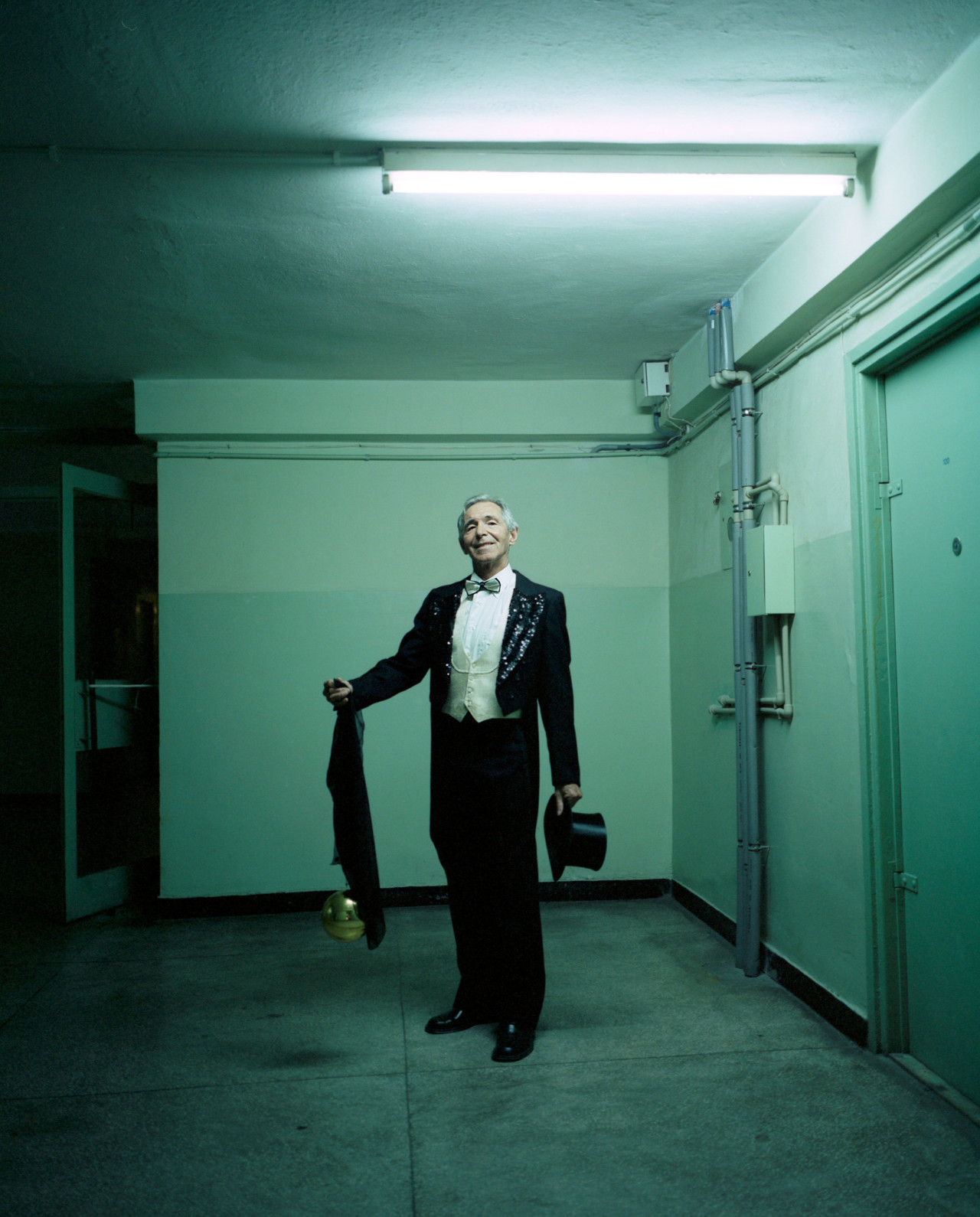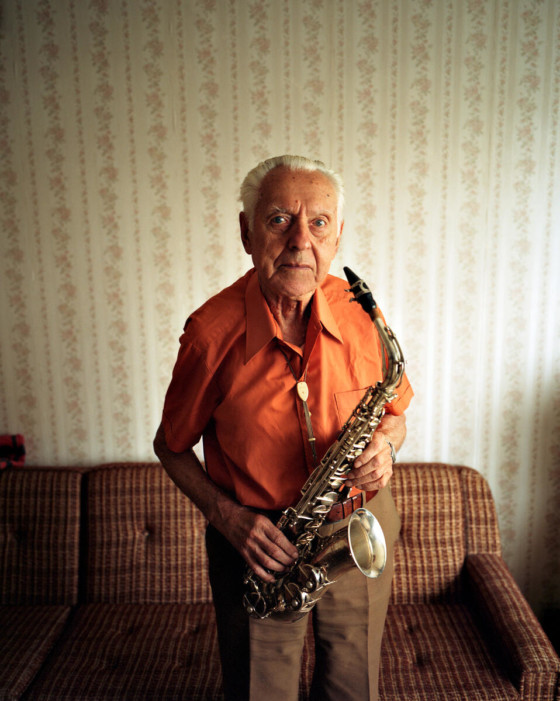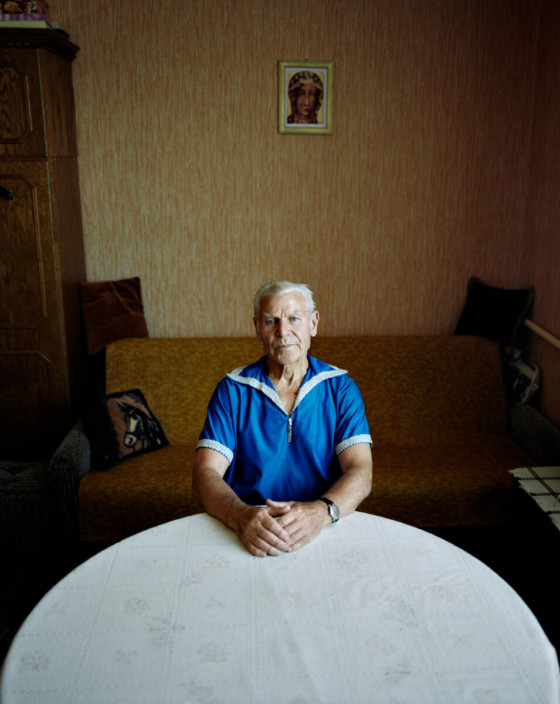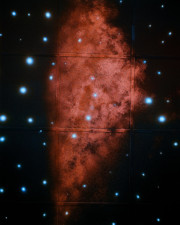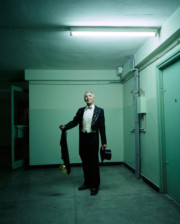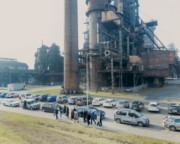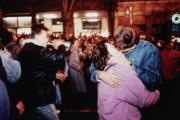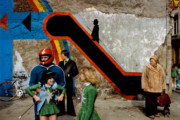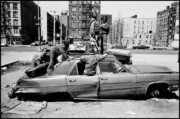Behind the Image: Disappearing Circus
One of the photographs selected for the April Square Print Sale, exploring the theme "Spectacle," is taken from a series by Rafał Milach documenting retired circus performers from Cyrk Polski in 2007
In post-war Poland, under the patronage of the communist State, the circus, or “Cyrk Polski,” became a cultural phenomenon, entertaining crowds for decades. In 2007, Rafał Milach traveled across the country to photograph portraits of retired Polish circus performers — magicians, acrobats, and contortionists — reinhabiting their former, whimsical personas.
In this series, donning their old costumes in the solitude of their homes, the performers’ alter egos have become ghosts of the past. Milach brings this anachronism to the fore, contrasting their dated circus attire with subdued hues and shadows. Zdzislaw Niemeczek, a retired illusionist, almost appears as an illusion himself. Sporting his showman’s tuxedo with a top hat in hand in the corridor of his housing block, the ceiling’s fluorescent tube has now replaced the old circus spotlight.
Milach focuses on the town of Julinek, home to the country’s prestigious circus base, the State Circus School, which has trained performers and technicians since 1950. Internationally recognized as a center for circus arts, it drew in managers from around the world who would scout performers for their arenas. In its heyday in the 1960s, the circus scene — while supported and controlled by the communist State — also became a catalyst for artistic expression, and a conduit for spectators to escape the oppressive framework of the Polish People’s Republic.
For many, circus performers were not simply subjects of amusement, but symbolic incarnations of an alternative, fantastical reality, alleviating the conformity of everyday life. Equally, circus posters, also commissioned by the State, veered from Soviet realism and allowed for colorful abstraction, often covertly snubbing the communist leadership.
By the 1990s, after the collapse of the Eastern bloc, which Milach witnessed in his youth, circus culture had dwindled. The school in Julinek, which had employed up to 1,500 artists and technicians, closed its doors in 1999.
In Milach’s series, former acrobat Stanislaw Krawczyk, then 73 years old, stands in its derelict arena. The school relocated to Warsaw, where it operated until 2010. In 2014, the buildings of the abandoned school in Julinek were renovated, and the State School of Circus Arts was reinstated, where its students and staff are reviving the beloved cultural heritage. The new school, whose grounds have also become a large-scale outdoor adventure park, now hosts the largest circus arts exhibition in Poland.


